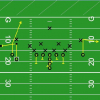
Anatomy of 4(1)(b)
Of 114 contested certifications in British Columbia (68 certified), 17 found no identifiable class:
Asp, 2014 BCSC 1124 (Blok J.), ¶46-53 (no rational connection; relief soug...
Construction Industry
Construction Industry Class Actions in Canada
Construction industry class actions quickly become multi-party. Plaintiffs bring in many defendants, including from each level of government. &nb...
Defence Bar's Playbook
Defendants employ a three-pronged approach at certification. I call it the “presence or predominance of individual differences and issues”. This Case Note should be read as a suppleme...
Drug Citations
“Abandon hope all ye who enter here” appears at the entrance to Hell in Dante’s Divine Comedy. It could also appear at the court house door to warn those who sue global drug ent...
Hollick 25
Hollick 25 sounds like a tasty brand of BBQ sauce. It’s my short hand reference to a fundamental paragraph in Canadian class actions law. Cloud 50 is another such paragraph.
At certifica...
National Class
After Wilson v Servier Canada Inc. (2000), 50 OR (3d) 219 (Gen. Div.), ¶57-95, defendants ought to have stopped bringing national class “constitutional” motions. In tha...
Planes, Trains & Automobiles
Class Actions in the Transportation Industry in Canada
I get gassy from gotchy defence-bar article titles like “Not Auto-matic: Certification in the Transportation Industry in Canada&r...
Sharp Sticks
Short maxims are as good as a sharp stick. Here's some of my favourites.
Civil Procedure is intended to reveal the truth. Defendants use it to hide the truth.
Class actions legi...
Species of Predominance
Arguments against certification generally fall within one of two categories: merits-based; and predominance-based.
Merits-based arguments advance that plaintiffs can’t win.
In c...








